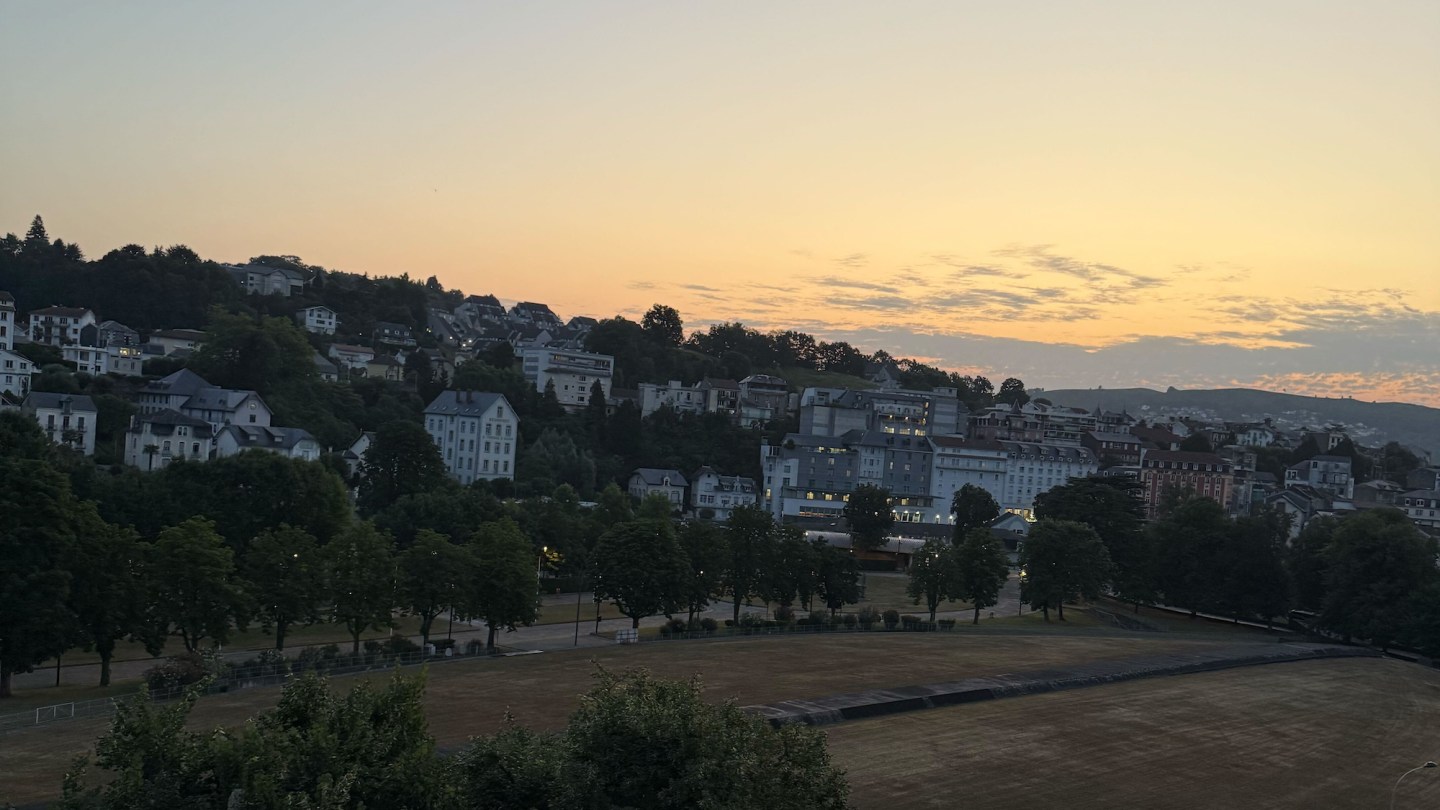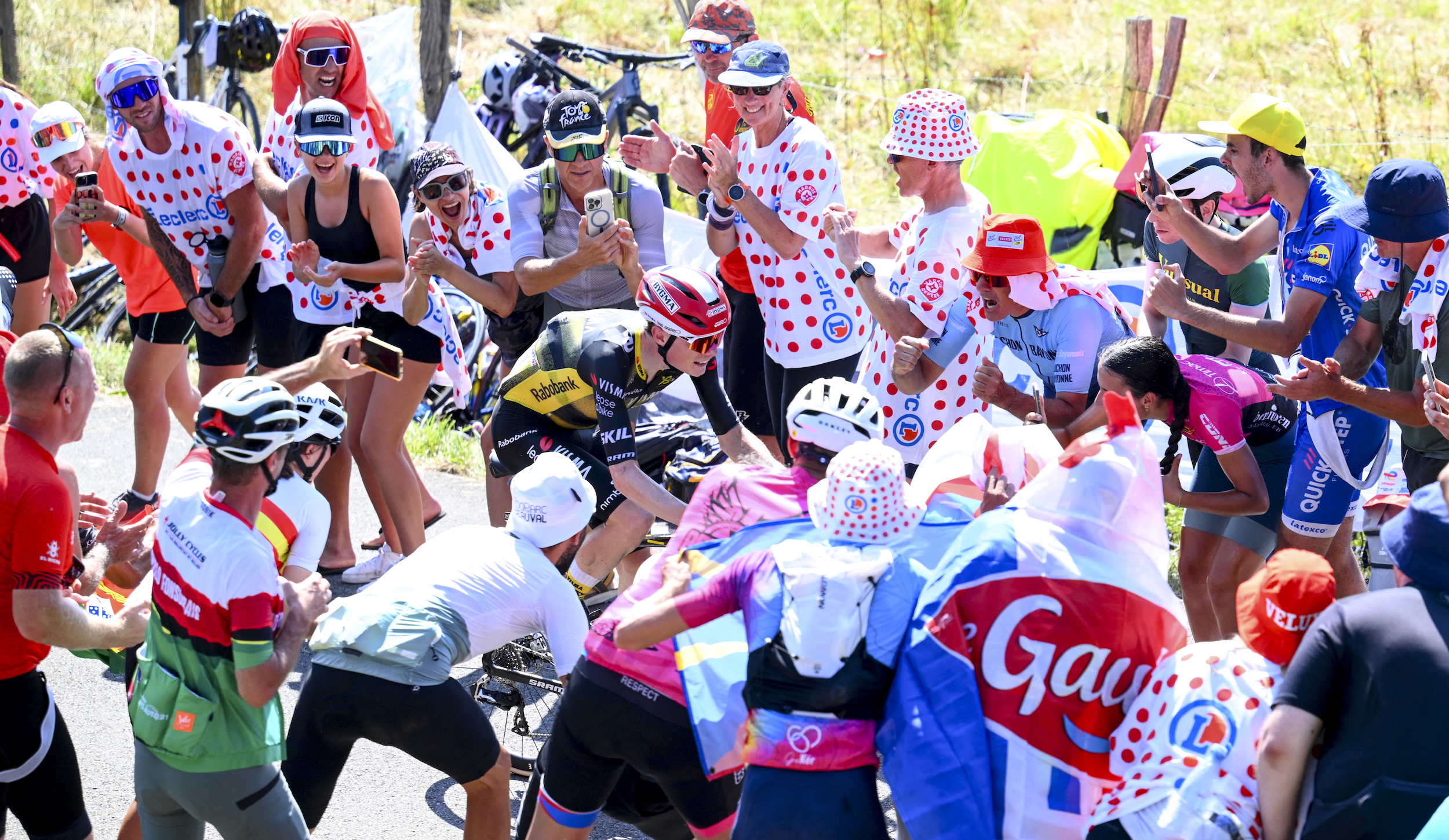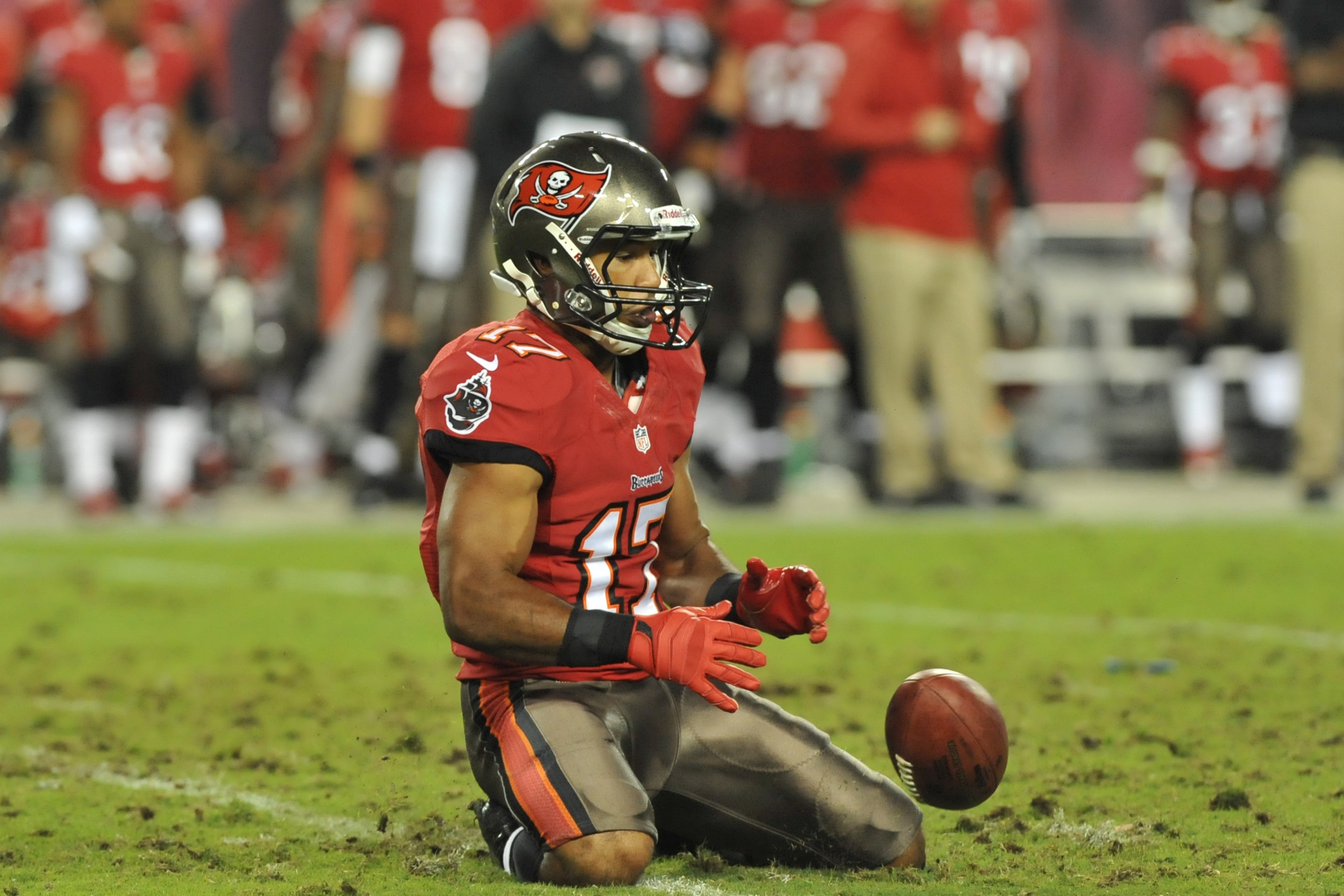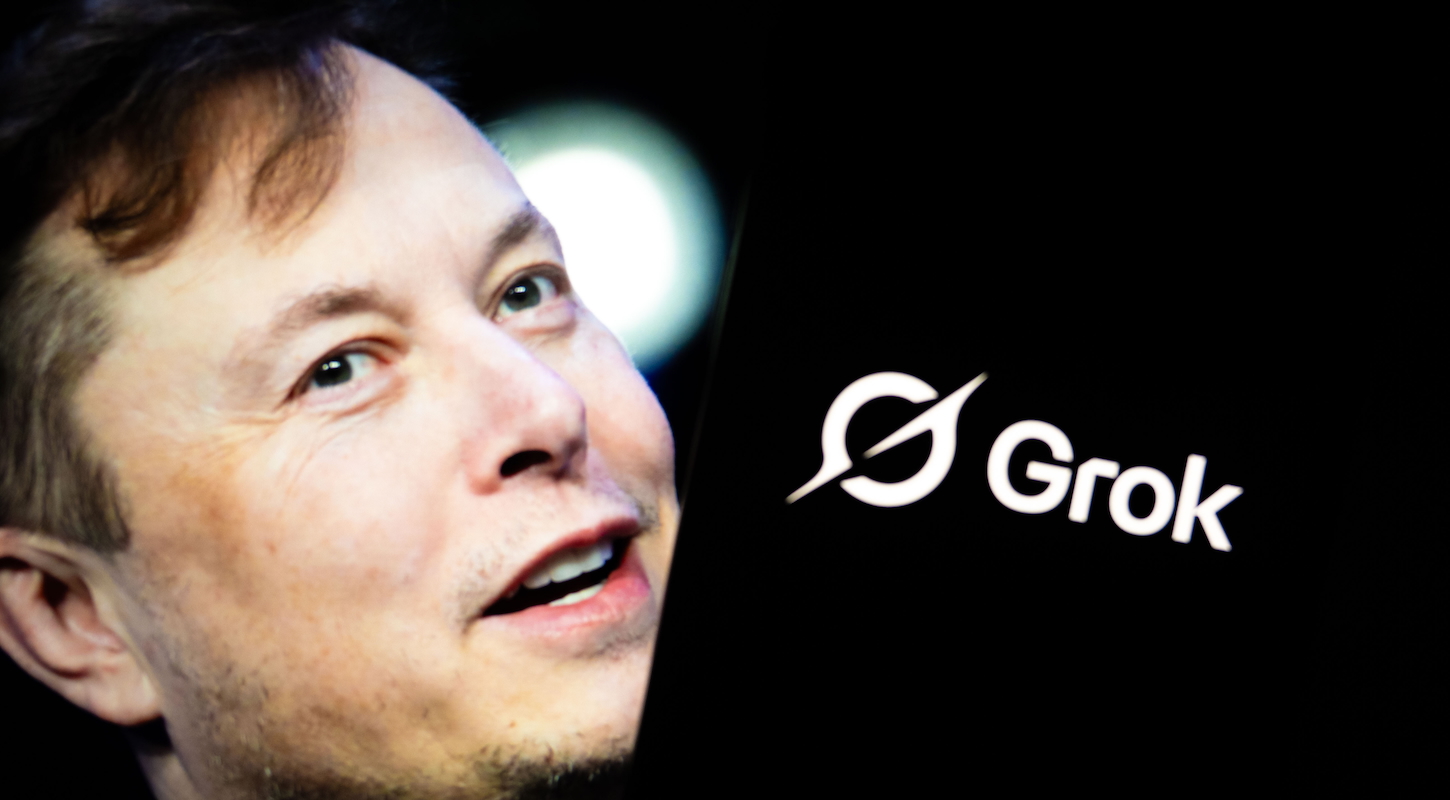HAUTACAM, France — "Fuck, what a shit birthday," Laurence Pithie gasps. The Kiwi rider from Red Bull has just summited the Hautacam, a winding, rolling, and, today, infernally hot Pyrenean climb that takes roughly 40 minutes. A better verb for what he did might be survived, as he finished 63rd, more than 31 minutes behind the winner, and he is currently stuffing his jersey full of ice. I ask him how old he is turning (23) and wish him a happy birthday. In response, I receive the most venomous "Thank you" of my life.
"Shit birthday" is a great, punchy descriptor for 2025 Tour de France's first climbing day: a party that drives you mad. The gathered thousands love it; the riders, not as much. As we'd threaded our way up the Hautacam amid clueless fans riding their bikes as if trying to get squished, children screamed at us and dirtbag French guys squirted water into my open window. My comrades and I are denied turns on a luge ride reserved for VIPs. Riders cross the finish line excreting and then gulping various salts and are swarmed by TV cameras. Jonas Vingegaard nearly runs me over seconds after finishing. Emmanuel Macron has flown to the top of the Hautacam in a helicopter.
This is the first mountain stage of the tour. Here is what it's like up there.
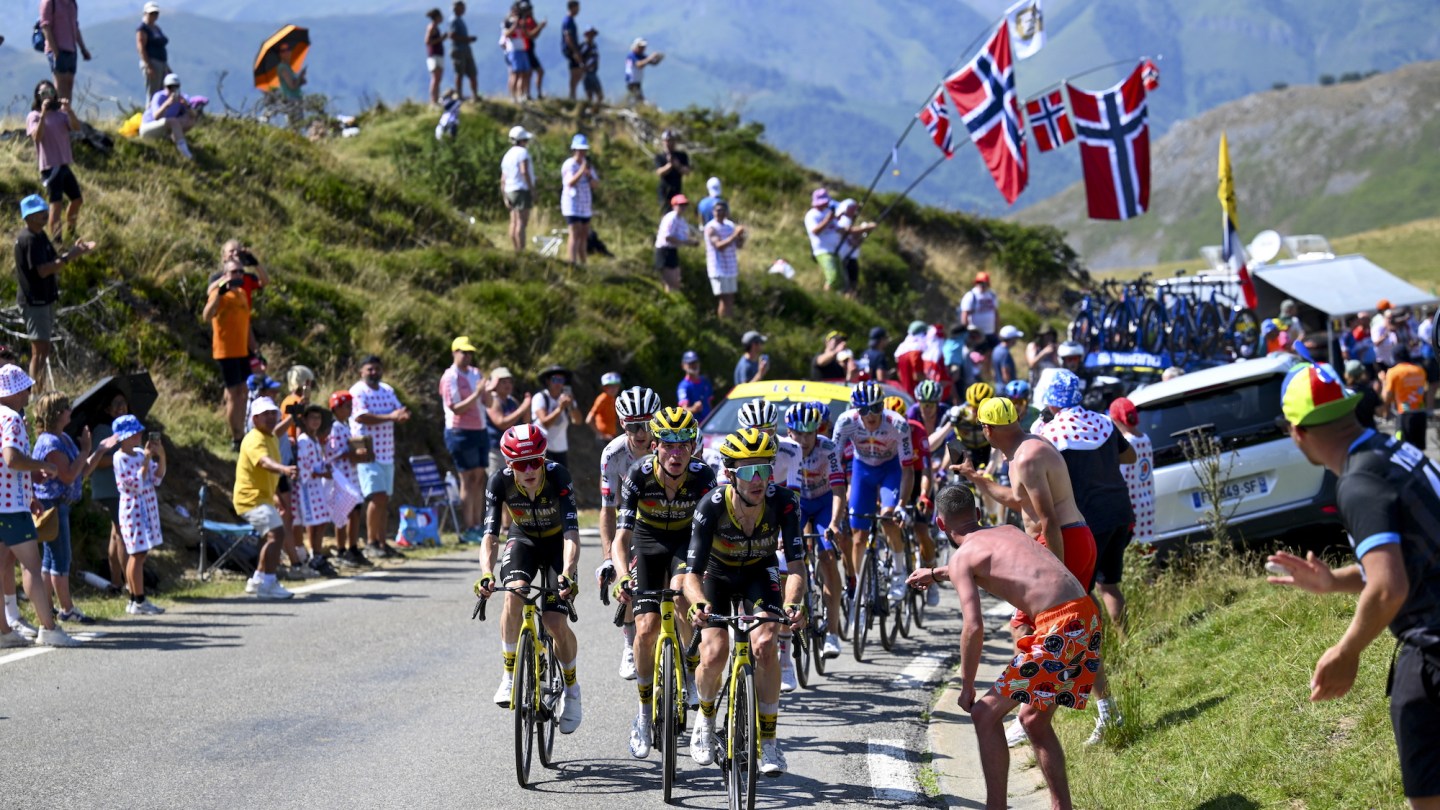
Road cycling is mostly arena-less. Riders compete across space rather than within a place. The word "tour" implies motion, and with it, a fundamentally incomplete spectatorial experience. Fans cheer as riders zip by, but zip by is what they do, and then they're gone. While surely fans enjoy witnessing the speed and sinuous bulk of the peloton, it all happens too fast to be understood from the side of the road. But understanding isn't the goal; communion is.
This is why road cycling's arenas, such as they are, are summit finishes. The Tour is replete with famous mountains, upon which Tours are decided and fans gather in the tens of thousands to cheer the riders on as they suffer up the punishing ascents. Fans accept incompleteness in exchange for a chance to witness cycling at its purest (read: most painful) for a few seconds. The suffering and the cheering are mutually constitutive, as the charged atmosphere created by the frenzied fans inflicts a pressure on the competitors. In other words, it feels like what playing in an arena must feel like, for both performer and audience.
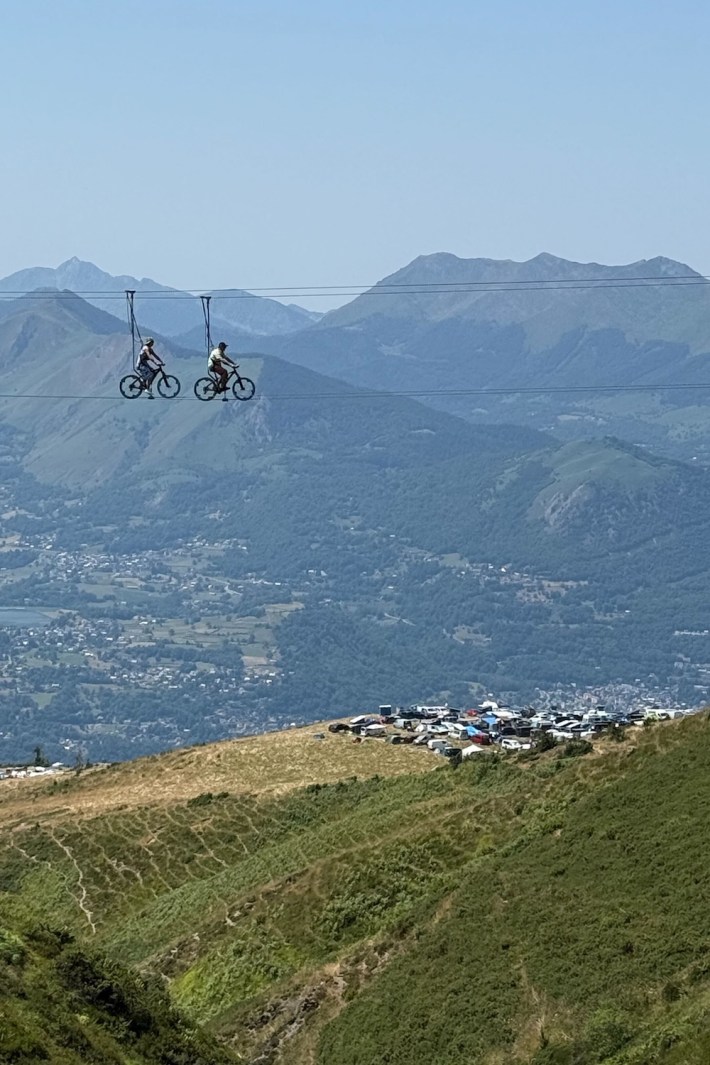
On a summit finish, the press corps must decide between the sterile sanity of the press room at the foot of the climb and the gorgeous logistical nightmare at the top. At the summit, you can talk to exhausted riders and take in breathtaking views, but the only way onto and off the Hautacam by car is on the course, which is thronged with the aforementioned screaming French children, not to mention sunburnt Belgian guys 12 beers deep, chanting Norwegians, and hundreds of poorly handled bicycles. I did not come to the Tour to sit in a room and eat trays of room-temperature French food. I came to get into the mud, so to speak, and so we go to the summit. I am lucky enough to have the Escape Collective boys to show me the ropes, and we seem to be some of the only non-TV journalists to commit to getting to the top.
The rough consensus from the more experienced people I talk to is that this year's Hautacam crowd is larger and slightly more unruly than expected. We drive onto the climb two hours before the race rolls through, which is not very long. It seems fun to ride the Hautacam before the professionals do, at speeds faster than most people go on a flat road, though that's more an 8 a.m. thing than a 2 p.m. thing. By the time we hit the foot of the mountain, the temperature is in the low 90s and the besotted fans and riders going up and down offer hardly one car's width of passing space.
It's totally worth it for the atmosphere as the professional riders come through a frothing crowd a few hours later. In 2022, the cops apparently forbade fans from riding past a certain point, which led to empty slopes higher up the climb. Not this time, thanks both to tourists who'd camped out days in advance and to those willing to tackle the climb themselves. I even meet three trail runners who'd run over the mountain's southern side from Luz-Saint-Sauveur. Everyone wants to be here, as high as they can manage.
On the summit, VIPs, service people, and thickets of cops mill around trying to find shade. We pull a stray table into the shade of a chalet outbuilding, which attracts the attention of a number of curious gendarmes and French federal policemen. One of Macron's bodyguards asks us for the WiFi password; there is no WiFi and therefore no password. A cop comes over, sees us watching the race on someone's phone, and asks how many kilometers are left. I tell him a Frenchman is in the lead. "I don't give a fuck," he replies, in English. One of his companions does, and is locked in on the action for several minutes—a real fan. I ask him who his favorite rider is and he says Tadej Pogacar.
That guy has a good day, then, because Pogacar smashes the Hautacam, seizing back the yellow jersey and coming within 30 seconds of the EPO-era record. The intense heat saps the peloton's collective spirit and legs, most painfully so in the case of Visma. Jonas Vingegaard's team controlled the race on the preceding Col du Soulor, but it costs them dearly. Simon Yates starts going backward, then Matteo Jorgenson, then Sepp Kuss. These were supposed to be the lieutenants that would help Vingegaard unseat Pogacar, a prospect that seemed if not likely then at least possible after UAE second-in-command Joao Almeida left the race during Stage 9 and Pogacar fell on Stage 11. Instead, they wilt on the Hautacam; Pogacar attacks near the bottom of the climb, hoovering up poor doomed Bruno Armirail, and beats Vingegaard by 2:10.
At the finish line, I am enmeshed in a scrum of 40 or so reporters, all armed with mics and TV cameras, ready to interview riders seconds after they've just wrung their bodies out like wet laundry and been screamed at in dozens of languages for almost an hour. Young Oscar Onley sits in a daze on the ground after finishing fifth. That's a defining result in the 22-year-old's career, which is not something one can have perspective on when fighting for one's life. "You've just finished fifth on the first mountain stage of this Tour de France, blowing away some of the best riders in the world," says TNT's Matt Stephens amid a group of seven or eight of us. "How do you feel right now?" Onley, who looks like he'd been poisoned, takes three seconds to gather himself before beginning his answer, "Just tired." He's doing considerably better than fourth-place finisher Tobias Johannessen, a couple of feet away and coughing up a lung like a possessed bullfrog.

Caley Fretz of the Escape Collective told me to stick by the soigneurs, who were awaiting their riders with recovery goops, which is how I end up right in the center of the Matteo Jorgenson scrum. He says, in a voice so quiet I have to listen to my recording afterward to actually hear him, that he had a "really bad day." French riders and stars are mobbed, but I'm able to have a casual chitchat with a bunch of lesser riders, who've donned warming layers, slurped various liquids, and have been furnished with whistles to help them descend down to the buses below. I ask Markus Hoelgaard if the Hautacam was fun or terrible. He grins and says a little bit of both.
The descent is just terrible. Typically, cars in the race get to leave in the official evacuation, with police escorting and keeping the caravanned masses from turning the road into a long parking lot; I'm advised that if we miss the evac, we may as well plan to sleep on the mountain. But the cops, maybe too entranced by Pogacar's big day, blow it and let the descent become a circus. I make my way down the Hautacam inch by inch over the course of three hours, which is apparently much slower than usual due to the presence and sheer number of the fans. The French guys who had messed with the official caravan by squirting (hopefully) water into open windows on the way up had us in their sights.

The descent madness is a totally worthwhile price to pay for the stunning views, the examples of French excellence, and the chance to talk to the tiredest people I have ever seen. It's dark by the time I return to Lourdes, which is essentially Catholic Disneyland. My reward for crawling down the mountain is getting to crawl through thousands of elderly pilgrims, here to see the famous Grotte des Apparitions, where the Virgin Mary is believed to have appeared to a teenage girl in 1858. Lourdes is absolutely packed with Catholic tourists from all around the world, here to visit the site of many miracles and buy plastic bottles of holy water and other assorted cheap trinkets.
We eat at a pizzeria owned by a flamboyant Italian man who said he loved "les Splash Brothers" and thought Draymond Green was "strong but crazy." A few minutes later he gets into a fight. Despite the solemnity implied by a holy cave, Lourdes is not an early-to-bed town, and the streets are totally packed until midnight. An elderly yet puckish Frenchman expresses facial bafflement and horror that the Escape crew is recording a podcast, and offers, in French, to come on to "speak about the faith." They use a street sweeper every night; I sleep three hours. This, from the top of the mountain to the bottom, is the Tour de France.
